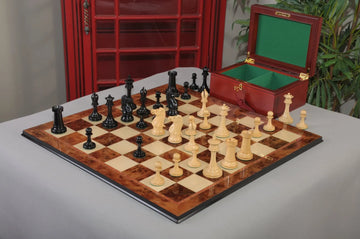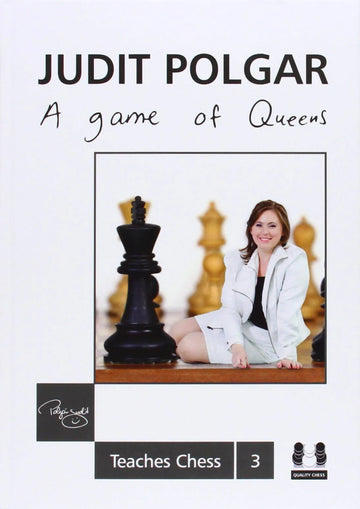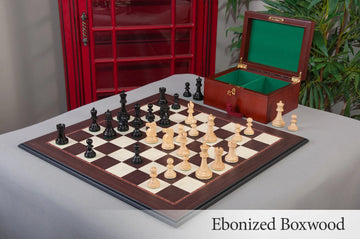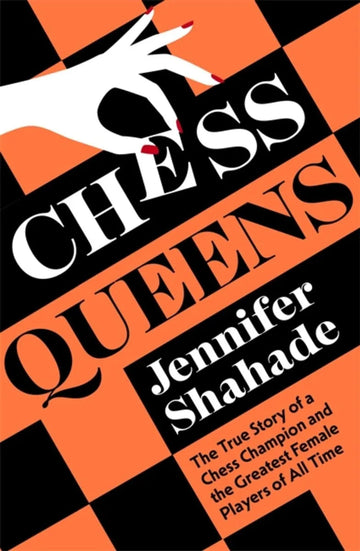Men and Women in Chess: What are the Differences?
Chess itself has no connection to gender. Yet, the difference in men's and women's experiences in chess is striking. Take representation, for instance. In 2021, only 11 female players were in FIDE tournaments for every 100 males. Even worse, there were only 2.3 female Grandmasters per 100 male Grandmasters.
Identifying the global circumstances that created these disparities is hard. Moreover, any conversation about women's representation can get political. People may bring out outdated views on biology or a woman's role in society.
We may disagree on the chess gender gap's root causes. Yet, we can all agree on some differences between men and women in chess. Here are some key differences between men and women in chess.

Women Grandmasters are Different from female Grandmasters
One big difference between men and women in chess is that women have their own unique chess titles. To be clear, women can earn all the same titles as men, but not the other way around.
FIDE grants chess players a total of eight different chess titles to show high achievements in chess. Four titles are standard for all players, and four titles are only for women.
Anyone can earn these four FIDE titles:
- Grandmaster - requires a FIDE rating of 2500, 3 GM norms
- International Master - requires a FIDE rating of 2400, 3 IM norms
- FIDE Master - requires a FIDE rating of 2300
- Candidate Master - requires a FIDE rating of 2200
However, only women can earn these four titles:
- Woman Grandmaster - requires a FIDE rating of 2400, 3 WGM norms
- Woman International Master - requires a FIDE rating of 2200, 3 WIM norms
- Woman FIDE Master - requires a FIDE rating of 2100
- Woman Candidate Master - requires a FIDE rating of 2000
As you can see, women's titles are difficult to achieve, but they are still set to a lower standard than gender neutral titles.
This is why Vaishali Rameshbabu and Judit Polgar have said that it might be best to retire titles altogether. The two women have achieved the Grandmaster title, the highest FIDE title available to any player.
Judit suggested replacing women's titles with titles based solely on ratings. "Why do we have women's titles? Isn't it much better to have rating titles and not that it's women or men?" she said in an interview with New in Chess. She suggested adding in more gender neutral titles.
Female Chess Players Have Their Own Tournaments
Most tournaments, especially at higher levels, are almost entirely male. To put it in perspective, Judit Polgar is the only woman to have ever reached the candidates' stage of the FIDE World Chess Championship cycle.
For this reason, just like they have their own titles, women also have their own tournaments. These tournaments create an environment where female chess players can compete against like-minded women.
Women's tournaments create a space that would otherwise be inaccessible to women. The Sussex Chess Association held the first-ever women's chess tournament in 1884. Then, the Soviet Union held the first state-sponsored tournament in 1924.
Since then, tournaments exclusively for women have continued to grow. For instance, there's the World Senior Women's Chess Championship. Nona Gaprindashvili, the first woman to ever earn the GM title, has won the title many times over. She first won it in 2009 and has successfully taken home a total of eight championships.
Related: Nona Gaprindashvili - Legendary Chess Careers

Advocates have fought to include LGBT people in more parts of society. This caused USCF and FIDE to both decide whether transgender people can take part in women's chess tournaments.
USCF's policy says that all women can compete as the gender they identify with.
On the other hand, FIDE excludes all trans people from playing in women's events. Transgender women can't enter women's FIDE tournaments. Meanwhile, transgender men who earned titles before transitioning would have their titles abolished. However, the titles can be renewed "if the person changes the gender back to a woman."
Female Chess Players Can Still Compete Against Men
Women's tournaments serve as a valuable tool to support female players. Still, they have their own issues.
Women's tournaments often have much smaller prizes than their open counterparts. Moreover, women play against lower-rated and titled players when they only play in women's tournaments. This limits their ratings and ability to earn norms for bigger titles.
Many women are groundbreaking for their participation in open tournaments. For instance, before World War II, Vera Menchik was the first woman to be a strong competitor against men. She beat Edgar Colle and Max Euwe. She also tied with Akiba Rubinstein for second place in a 1929 tournament. Capablanca came in first.
Susan Polgar is another example. She was known for not participating in women's events. In 1986, she qualified for the Men's World Chess Championship cycle. Sadly, she wasn't allowed to compete because she was female. After this, FIDE dropped "Men's" from the title.
Her sister, Judit Polgar, participated in the 1999 World Chess Championship. She also played first board for Hungary in the Men's Chess Olympiad.

Who are the Greatest Men and Women Players?
Who is the greatest chess player of all time? When it comes to male players, the answer to this question is subjective. The most popular answer is likely Magnus Carlson. On the other hand, Garry Kasparov or Bobby Fischer could also be considered the greatest.
However, one thing is clear: Judit Polgar is the greatest female chess player of all time. At 15, she broke Bobby Fischer's record as the youngest Grandmaster.
Related: Judit Polgar - From GM to Top 10
To this day, she remains the only woman to achieve a rating above 2700, earning Super GM status. She also ranked 8th in the world. Judit Polgar retired from competitive chess in 2014.
Hou Yifan is the greatest female player who has not retired. At the age of 14, she became the youngest female player ever to qualify for the GM title.

Credit: Wikimedia Commons/Andreas Kontokanis
In 2010, at 16, she became the youngest Women's World Championship winner. Hou would win it three more times.
Women in Chess are Perceived Differently
One painful truth about the world is that biases color women's experiences all too often. This happens in chess, too. For instance, studies show a gender bias against female chess players by their coaches and parents.
Moreover, the greatest players in the world show pretty strong sexism. Two of the most historic men in chess, Bobby Fischer and Garry Kasparov, both made strongly sexist remarks. Years later, both backed away from the comments.
Women chess players often gain popularity based on their looks. Lisa Lane, a WIM and two-time US Women's Champion was the first chess player to make the cover of Sports Illustrated in August of 1961. She was also in New York Times, LIFE, Newsweek, and Look.

Lane wasn't from a wealthy family or an educated background. She only discovered chess in her late teens and dropped out of high school. She began receiving lessons from master Attilio Di Camillo. Lane won her first U.S. Women's Chess Championship in 1959 and again in 1963. By 1967, she had dropped competitive chess. In the end, she struggled to support herself through chess.
Related: United States Women's Chess Champions, 1937 - 2020
She had a unique backstory for a chess player. Still, most of her news coverage focused on her appearance and her romantic relationships rather than her impact on chess.
Even today, the greatest female chess players get many comments on their appearances. The most popular women's chess streamers receive a lot of attention focused on their appearance. Their talents deserve more attention.
All too often, women get dismissed in society. This pattern follows women straight to the chess board.
FAQ: Men and Women in Chess: What are the Differences?
Judit Polgar is the greatest female chess player in history. While she is retired, Hou Yifan is second best and is considered the best active player in the world. Hou is currently inactive.
Women are allowed to attend tournaments and chess clubs today, but historically they weren't. The barriers that keep women out today are largely social and systemic in nature. While there aren't clear boundaries in the sand that keep women out, women are held back by internalized sexism that their coaches, competitors, parents, or even selves may have.
Yes, some women have the Grandmaster title, and others have the Women Grandmaster title. Today, there are less than 50 female Grandmasters, and all of them are still alive. There are less than 500 Women Grandmasters.
Women are underrepresented in chess because of social and systemic barriers. At the most competitive levels, coaches who train aspiring GMs may have false internalized beliefs about what a female chess player is capable of. Therefore, they won't push them as far or advocate for them, stifling their growth.
Women in chess could be less likely to get financial support from a sponsor if they have internal bias. Women's Championships also have smaller monetary prizes, making it financially less lucrative for even the strongest players.







